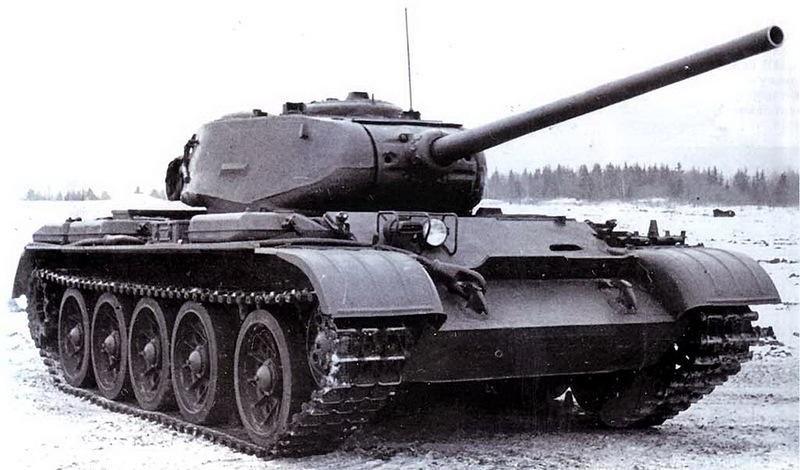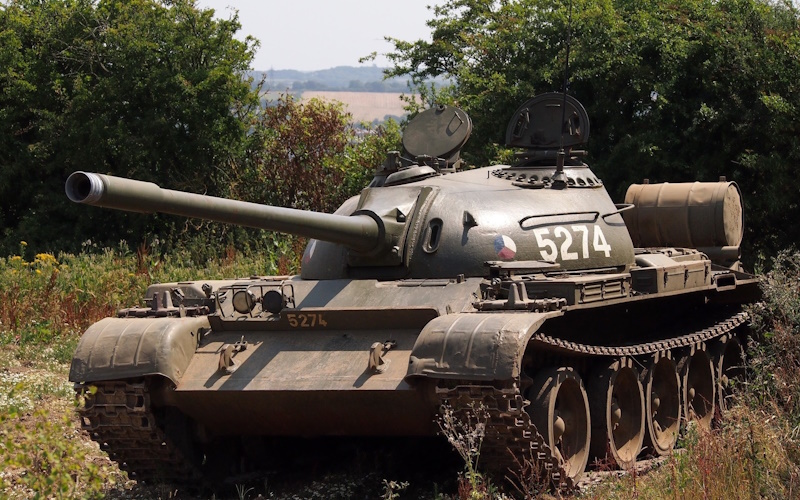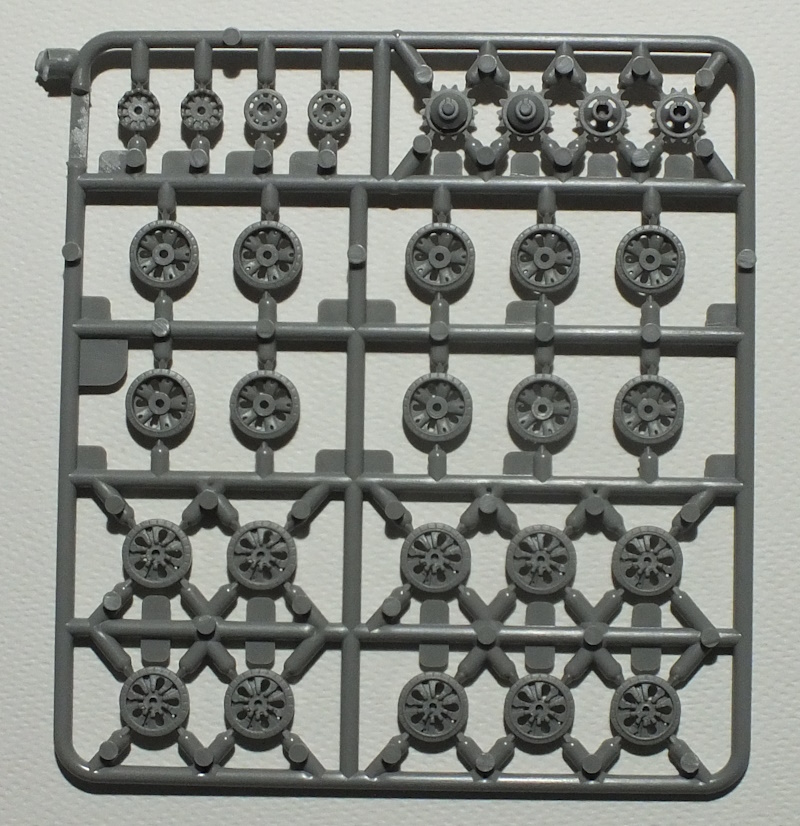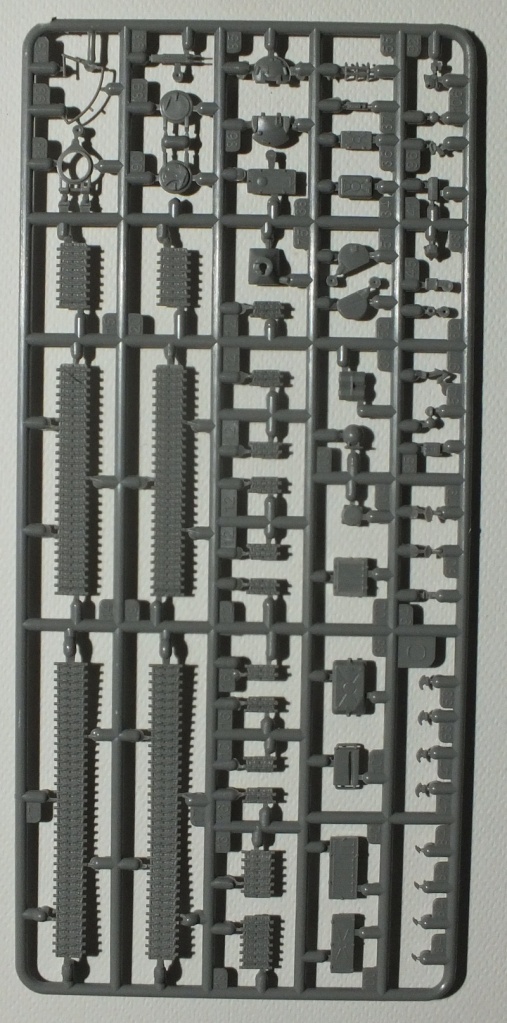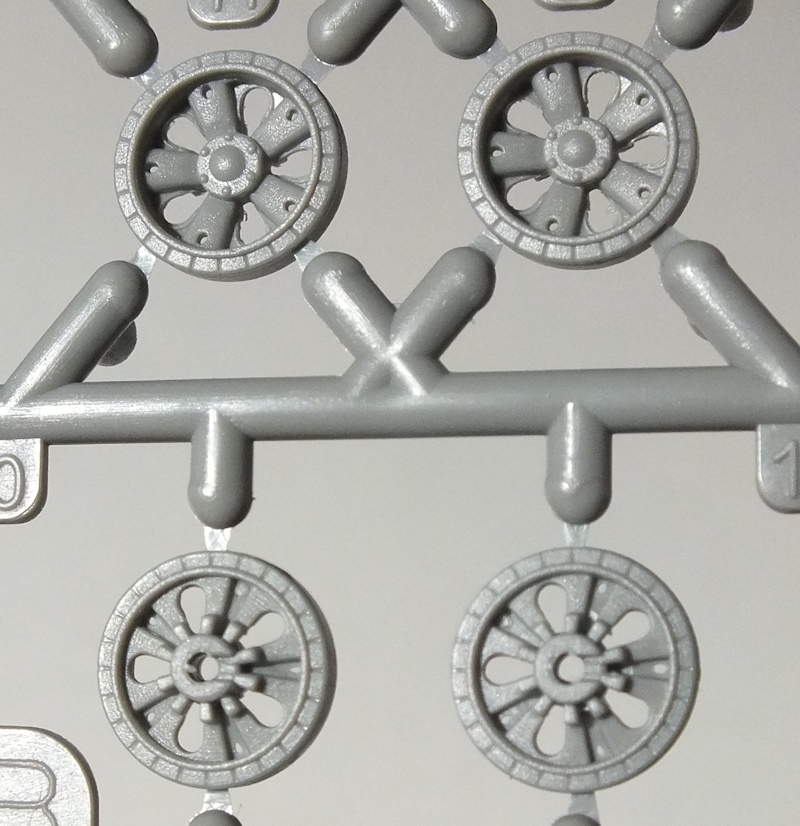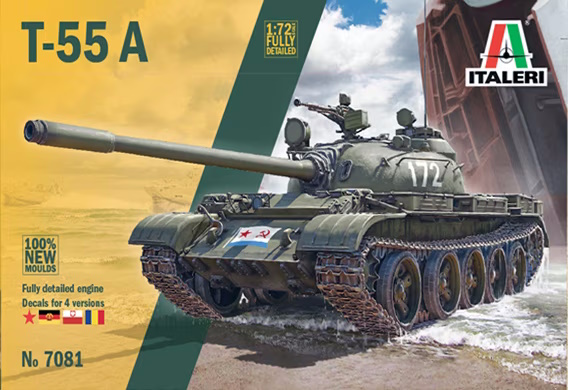I begin by assembling the lower hull tub which comprises five parts. Fit is great.

I paint and add the roadwheels, idlers and sprockets. The roadwheels are a fairly loose fit on the spindles and some care is required to get everything to line up. On the T-55, its torsion-bar suspension means that the roadwheel arrangement is asymmetric, with the roadwheels on the left being set notably further back than those on the right. It’s good to see that accurately modelled here.

Then I add the tracks. And I’d have to say that these are probably the simplest and most straightforward link-and-length tracks I have tried. Fit is good, they assemble precisely as per the instructions with no need to bodge or cut out links and when they’re done, they don’t look bad. Top marks to Revell! And I do appreciate the ability to completely finish and paint the running gear before starting work on the rest of the kit.

Then, it’s on to the upper hull. There are lots of parts to be added. A little filler is needed to smooth the join where the semi-circular fillets join the sides, but otherwise fit and location of the main parts is great.

Then I join the upper and lower hull and add the rear mudguards and the forward halves of the rear fuel tanks. Fit is great and no filler is required.
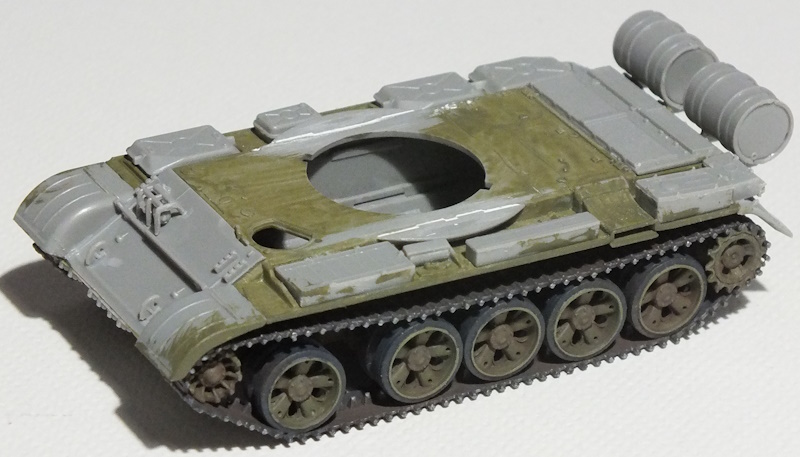
Next, the turret. There are some fairly tiny parts here, but everything locates well and fits nicely. I’m using parts appropriate for a Soviet T-55M here, as I did with the rear deck on the hull. The instructions don’t talk about these alternate parts at all (they only show the parts needed to build a T-55AM), but I was able to find an online scan of the instructions for the original Revell T-55M/AM kit, and these explain what’s needed and what should be left out.
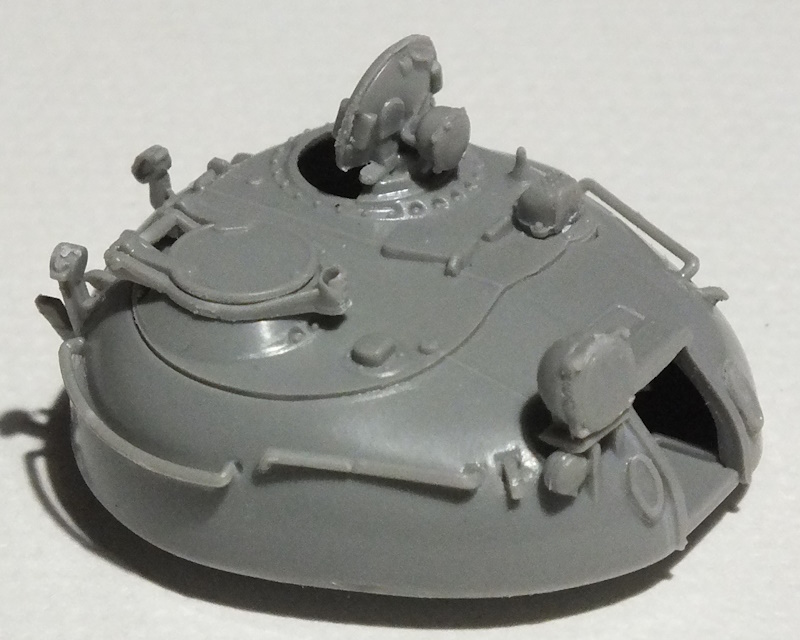
Then the hull and turret gets several thinned coats of green and some dry-brushed highlights. I have also added some colour variation to the base green, though it isn’t obvious in the image below.

Then I add decals from the spares box for a tank of 6th Guards Tank Division in 1975.
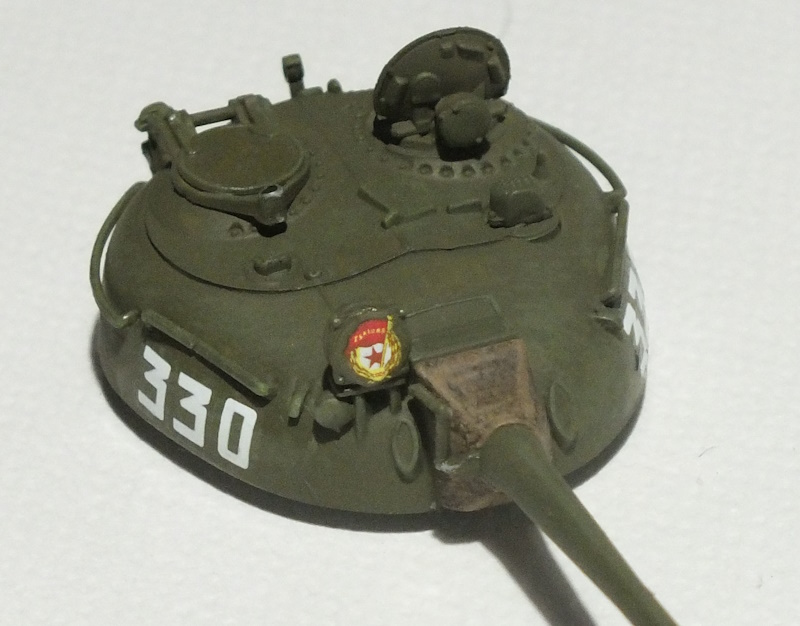
I add the turret MG, the tow cables and the unditching log and other parts on the rear hull and then I give everything a coat of varnish and a dark grey wash.

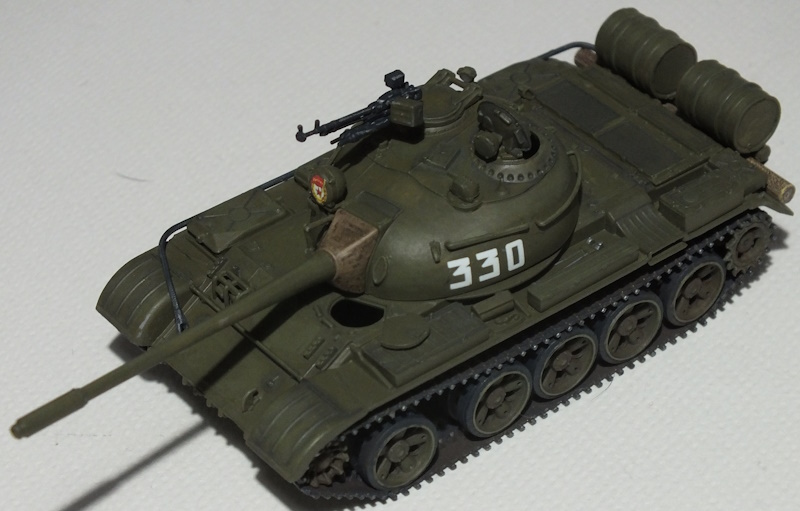
Normally, that would be the build close to finished but this time, I want to try to make a simple diorama base on which to display the finished kit. I want to include figures, both crew and infantry, and I was surprised at just how difficult it is to suitable Cold War figures in 1/72 and at a reasonable price. There are plenty of appropriate 3D printed and resin figures but most cost considerably more than I paid for this kit! In the end, I settled for two low-cost packs of figures. The infantry figures come from the Zvezda Soviet Motorized Infantry set, part of their Hot War wargames range and first released in 2013.

This is more like a mini-kit than traditional soft plastic 1/72 figures. It includes just five figures moulded in hard plastic with separate limbs and weapons.
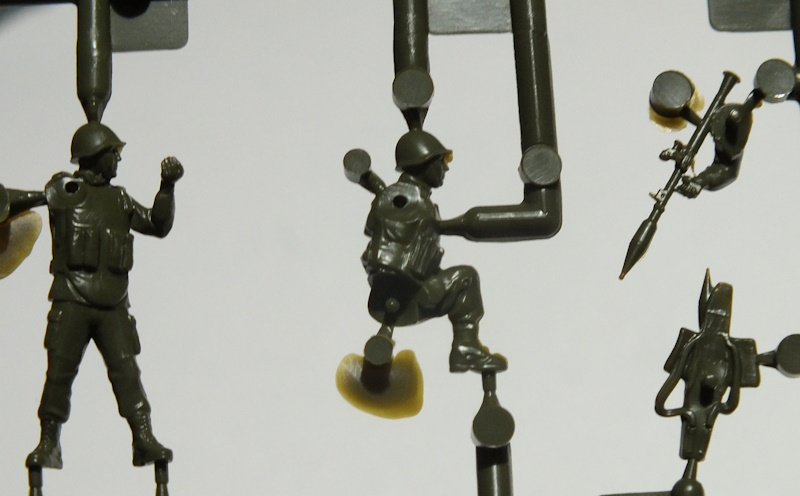
The second set is HaT WW2 Russian Tank riders and this is a more traditional set of 44 soft plastic figures first released in 2011.

I want the seated infantry figures for my next kit, but this boxing also includes tank crew figures. These are World War Two figures wearing late-war tanker’s uniforms but in 1/72, IMHO, they’re close enough to pass for figures from the 1970s.

With the figures sorted, it’s time to consider the diorama base. OK, I know, you can buy lots of ready-made dioramas and display bases, but where’s the fun and challenge in that? I’m using a circular wooden kettle stand, purchased at my local Chinese Bazaar for a mighty €1.50.

The first step is to use filler to build up something that will hopefully look a little like a portion of dirt track passing through a grassy meadow in East Germany in the 1970s. Before adding the filler, I covered the top of the base with a layer of PVA glue to help bond it to the base.
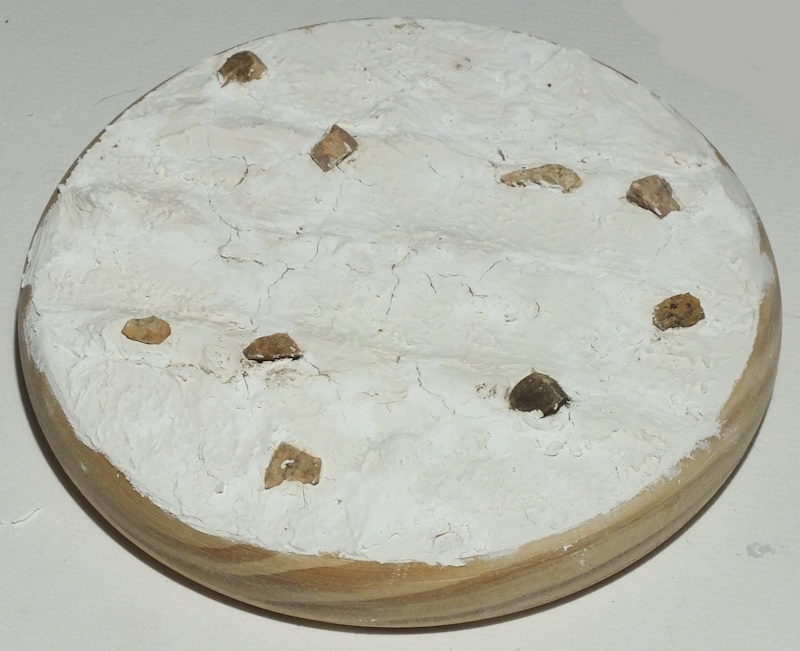
Then it gets painted.
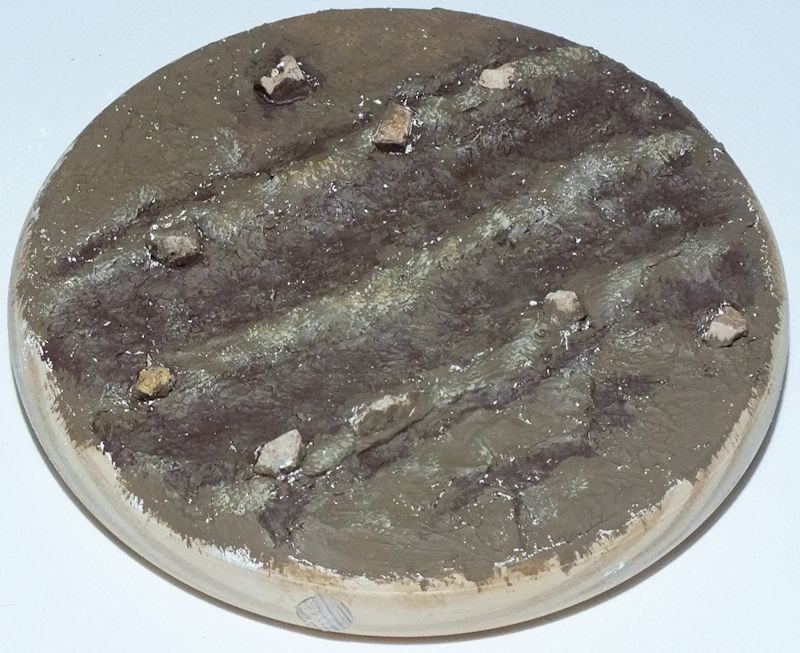
And finally I paint the edges of the base and add some of this stuff.

It’s easy to use – you just paint the areas where you want grass with PVA glue and then sprinkle it on and shake off the excess.

Then I add the tank and figures to the base and it’s done.
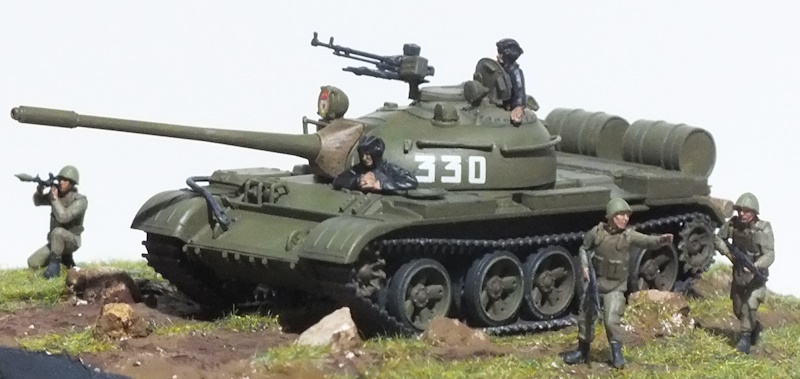

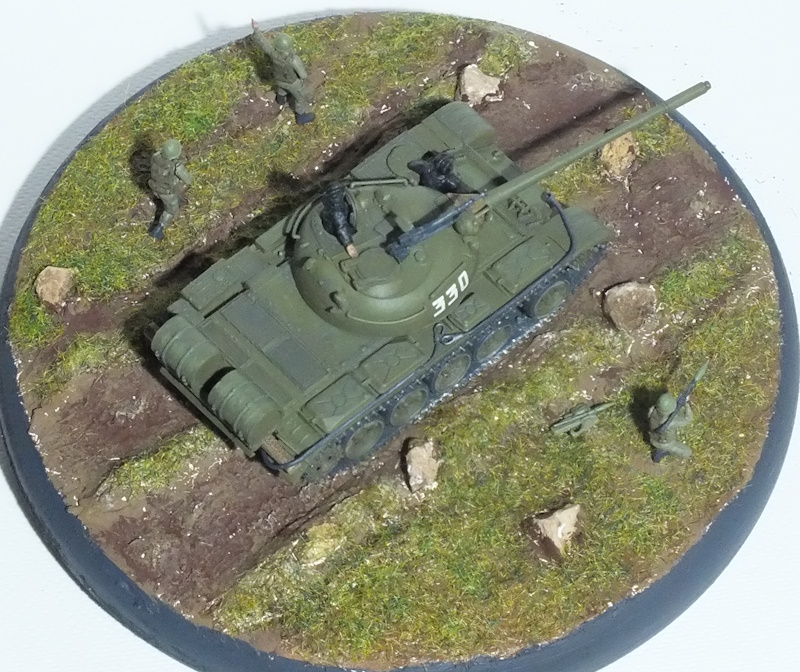

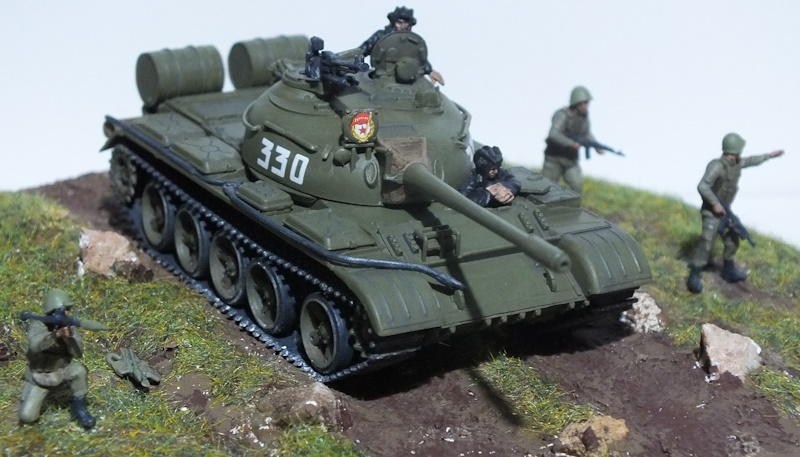
After Action Report
Producing kits that have sufficient detail but aren’t tricky to build can’t be easy. I certainly appreciate good detail, but I don’t enjoy a fiddly build. For me, these Revell 1/72 armour kits really get the balance right. They’re reasonably priced, mould quality is good, fit and location are excellent and detail is pretty good, but there’s nothing here in terms of construction that’s frustratingly difficult. Just like the other Revell 1/72 kits I have tried; I enjoyed this build and I think it looks OK when it’s done.

Attempting a diorama base was fun. Just like the seascapes I have done; this was a different sort of challenge. It’s far from perfect (it would have been better, for example, if I had added some shrubs or bushes, just to give it more height variation), but I did learn from the experience and I’m planning another home-made diorama with my next armour kit.

I think that the figures add to the diorama. Although this is a relatively recent release, the HaT crew figures are old-fashioned soft plastic figures, and detail isn’t the best. The Zvezda hard-plastic figures are much better detailed and they assembled without any problems. Overall, I enjoyed this build. And that’s why my next kit will feature the T-55’s predecessor, the T-34 on another diorama base. But this time, I’ll be building a kit that’s almost 50 years old…
Related Posts
Revell 1/72 T-55A/AM with KMT-6/EMT-5 (03328) In-Box Review and history




